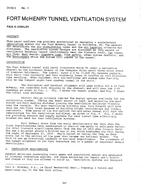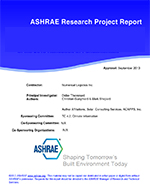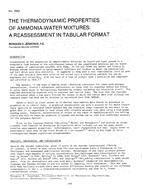The indirect evaporative cooling cycle is one incorporating both evaporative cooling and heat exchange: the evaporative cooling is performed on the outgoing air from the cooled enclosure, which is then heat exchanged with incoming or supply air, and is thus cooled on its way to the enclosure. Such a process enables ambient air to be cooled to a lower dry-bulb temperature than in the normal evaporative cooling process while remaining at a substantially constant dewpoint temperature.
The cycle therefore has application in areas of low and moderate humidity, that is, in most of Australia, for example, and in a large part of the south-west of U.S.A.
A summary of several types of regenerative evaporative cooling cycles was given by Dunklel in a paper presented at the time when the Division of Mechanical Engineering, CSIRO, commenced investigation of these systems. The principal objective was to produce a comfort cooling system at a competitive capital cost and at a significantly lower operating cost, as compared with a conventional refrigerated system.
It is the purpose of this paper to describe the status of work carried out by the Division on three particular systems, namely the rock bed regenerative unit (RBR), the plastic-plate heat exchanger concept (PHE) and the rotary regenerative heat exchanger (RRX).
Citation: ASHRAE Transactions, Volume 82, Part 1, Dallas, TX
Product Details
- Published:
- 1976
- Number of Pages:
- 10
- File Size:
- 1 file , 1.5 MB
- Product Code(s):
- D-DA-2390


